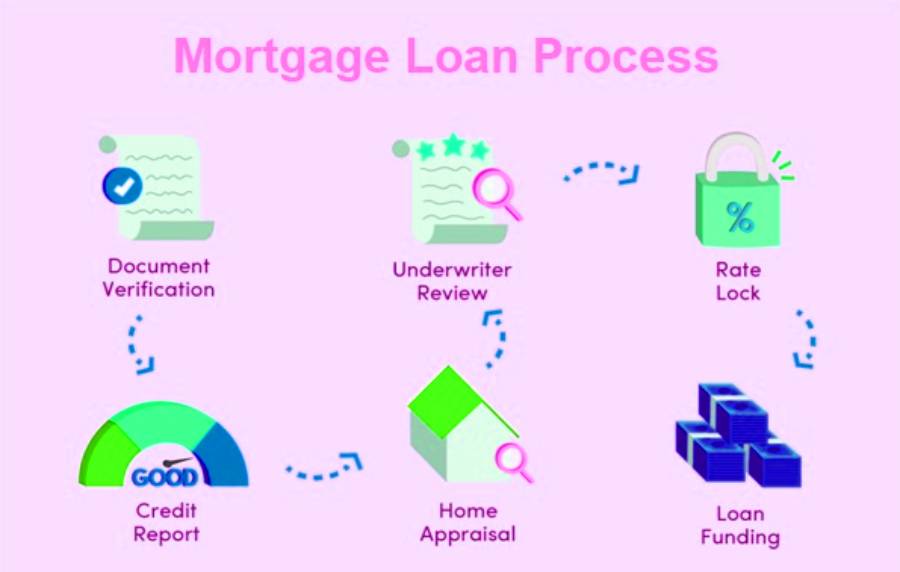Latest Mortgage Tips around the Global
Latest real estate Tips around the Global

” The Best Mortgages with Confidence: Top Tips for Homebuyers”
Securing a mortgage is a critical step in the homebuying journey, but it can also feel overwhelming. With the right knowledge and preparation, you can approach the mortgage process with confidence. Here are some valuable tips for homebuyers to make the most of their mortgage experience.1. Check and Improve Your Credit: Before applying for a mortgage, review your credit report and address any issues. A higher credit score can lead to better interest rates and loan terms.
2. Determine a Budget: Calculate how much you can comfortably afford for your monthly mortgage payments. A general guideline is that your housing expenses shouldn’t exceed 25-30% of your monthly income.
3. Research Mortgage Options: Explore different types of mortgages, such as fixed-rate and adjustable-rate mortgages. Choose the one that aligns with your financial situation and long-term plans.
4. Get Pre-Approved: Pre-approval shows sellers that you’re a serious buyer and can give you an advantage in competitive markets. It also helps you understand your budget more accurately.
5. Compare Lenders: Don’t settle for the first lender you come across. Shop around and compare mortgage rates, terms, and fees from multiple lenders to find the best deal.
6. Understand the APR: The Annual Percentage Rate (APR) reflects the true cost of the loan, including interest and fees. Compare APRs when evaluating different loan offers.
7. Save for a Down Payment: While many loans offer low down payment options, a larger down payment can lower your monthly payments and interest costs over time.
8. Factor in Closing Costs: Closing costs can add up to a significant amount. Ensure you have enough funds set aside to cover these expenses.
9. Lock in Your Rate: If you’re satisfied with the current interest rate, consider locking it in to protect yourself from potential rate increases before closing.
10. Avoid Major Financial Changes: Don’t make major financial moves, such as changing jobs or taking on new debts, during the mortgage process. It could affect your loan approval.
11. Read and Understand Documents: Carefully read and understand all loan documents before signing. If you have questions, don’t hesitate to ask your lender.
12. Keep Documents Organized: Lenders require a range of documents during the application process. Keep them organized and readily available to streamline the process. Navigating the mortgage process can be smoother when armed with these tips. By taking the time to prepare, research, and understand your options, you’ll be well-equipped to make informed decisions that align with your financial goals.

“Mastering Mortgage Management: Tips for Homeowners”
Managing a mortgage is a significant responsibility that requires careful planning and financial discipline. Whether you’re a first-time homeowner or have owned a property before, these mortgage management tips can help you navigate this crucial aspect of homeownership.1. Set Up Automatic Payments: Avoid missed payments and late fees by setting up automatic mortgage payments through your bank.
2. Monitor Interest Rates: Keep an eye on interest rate trends. If rates drop significantly, refinancing could potentially save you money over the life of your loan.
3. Make Extra Payments: Consider making additional payments toward your principal whenever possible. This can help reduce the overall interest you pay and shorten the loan term.
4. Understand Escrow: If your mortgage includes an escrow account for property taxes and insurance, understand how it works and review statements regularly.
5. Regularly Review Your Budget: Periodically reassess your budget to ensure that your mortgage payments and other housing expenses remain manageable.
6. Communicate with Your Lender: If you encounter financial difficulties, reach out to your lender early. They might offer options to help you avoid defaulting on your mortgage.
7. Stay Informed About Market Trends: Keep up-to-date with real estate and mortgage market trends. This knowledge can influence your decisions regarding refinancing or selling.
8. Consider Biweekly Payments: Making half of your monthly mortgage payment every two weeks results in an extra full payment each year, reducing your principal faster.
9. Be Wary of Adjustable Rates: If you have an adjustable-rate mortgage, be prepared for potential rate increases. Understand how they could impact your payments.
10. Avoid Taking on New Debt: Refrain from taking on significant new debts while managing your mortgage. Changes in your financial situation could affect your ability to pay.
11. Keep Records: Maintain a record of all your mortgage-related documents, statements, and correspondence for reference.
12. Review Homeowners Insurance: Regularly review your homeowners insurance to ensure it provides adequate coverage for your property’s value. Owning a home is a long-term commitment, and managing your mortgage wisely is key to maintaining financial stability. By following these tips and staying proactive, you can ensure that your mortgage remains a manageable and positive aspect of your homeownership journey.

“Unlocking Mortgage Success: Tips for Refinancing”
Refinancing your mortgage can be a strategic move to lower your monthly payments, reduce the loan term, or tap into your home’s equity. However, it requires careful consideration and planning. Here are some tips to make the most of the refinancing process.1. Assess Your Goals: Determine your reasons for refinancing – whether it’s to secure a lower interest rate, shorten the loan term, or access cash.
2. Check Your Credit: A higher credit score often leads to better refinancing terms. Before applying, review your credit report for accuracy.
3. Research Your Options: Explore different loan programs and lenders to find the best fit for your financial goals.
4. Calculate the Savings: Determine how much you could save by refinancing, factoring in closing costs and the potential reduction in monthly payments.
5. Compare Rates: Obtain quotes from multiple lenders to compare interest rates, terms, and fees.
6. Consider Your Loan Term: Decide whether you want to maintain your current loan term or opt for a shorter term to pay off your mortgage sooner.
7. Understand Closing Costs: Be aware of the closing costs associated with refinancing and ensure that the potential savings outweigh these expenses.
8. Prepare Documentation: Gather the necessary documents, such as proof of income and assets, to streamline the application process.
9. Lock in Your Rate: Once you find a favorable interest rate, consider locking it in to secure that rate during the application process.
10. Factor in the Break-Even Point: Calculate how long it will take to recoup the closing costs through the monthly savings from refinancing.
11. Refinance for the Right Reasons: Ensure that refinancing aligns with your long-term financial goals and doesn’t merely provide short-term relief.
12. Be Patient During Processing: Refinancing involves paperwork and processing time. Be patient and responsive to requests from your chosen lender.
13. Review Loan Estimates: Compare the Loan Estimates from different lenders to understand the total cost of refinancing.
14. Consult a Financial Advisor: If you’re uncertain about whether to refinance, consult a financial advisor to get personalized guidance. Refinancing can offer significant benefits, but it’s important to approach it with a clear understanding of your goals and the potential outcomes. By following these tips and conducting thorough research, you can make an informed decision that positively impacts your financial situation.
“Here are 20 Key Steps to Getting the Mortgage Process”:
1. Assess Financial Readiness: Evaluate your financial health, including credit score, debt-to-income ratio, and savings, to determine your mortgage eligibility.2. Define Your Budget: Establish a realistic budget that considers not only the mortgage payment but also taxes, insurance, and potential maintenance costs.
3. Mortgage Prequalification: Get prequalified by a lender to estimate how much you can borrow, providing a general idea of the price range for your home search.
4. Home Search: Begin looking for properties within your budget, considering location, size, amenities, and resale potential.
5. Property Selection: Choose the property you wish to purchase and make an offer, typically contingent on mortgage approval.
6. Formal Mortgage Application: Submit a formal application to your chosen lender, providing detailed financial information and documentation.
7. Lender’s Assessment: The lender reviews your application, verifies your financial details, and performs a credit check.
8. Loan Estimate: Receive a Loan Estimate from the lender detailing the estimated terms, closing costs, and monthly payments.
9. Property Appraisal: The lender orders an appraisal to determine the property’s market value, ensuring it aligns with the loan amount.
10. Loan Processing: The lender’s team reviews your application, documentation, and appraisal to ensure all requirements are met.
11. Title Search and Insurance: A title company conducts a search to verify the property’s ownership history and offers title insurance to protect your investment.
12. Home Inspection: Arrange a professional inspection of the property to identify any structural or safety issues.
13. Underwriting Review: The lender’s underwriting team evaluates the application, ensuring it meets the loan criteria. This step can involve additional documentation requests.
14. Conditional Approval: Based on the underwriter’s review, you might receive a conditional approval, listing any outstanding requirements.
15. Clearing Conditions: Address any conditions outlined in the conditional approval, such as providing additional documentation or explanations.
16. Final Approval: Once all conditions are satisfied, you receive final approval for the mortgage.
17. Closing Disclosure: Receive a Closing Disclosure that outlines the final terms of the mortgage, including interest rate, monthly payments, and closing costs.
18. Final Walk-Through: Conduct a final walk-through of the property to ensure it’s in the agreed-upon condition before closing.
19. Closing Meeting: Attend the closing meeting, where you sign the mortgage documents, pay closing costs, and finalize the transaction.
20. Loan Funding and Transfer: The lender funds the loan, and the property ownership is transferred to you. You become the official homeowner. Going through the mortgage process involves many steps, each playing a vital role in ensuring a smooth and successful home purchase. Working closely with your lender and real estate professionals can help you navigate these steps with confidence.
Available For Sale
1 Square Philips 1 new condo for sale in Montreal
- Beds: 1-3
- Baths: 1-3
- 378-1,690
- CAD $490,900
1 Square Philips 2 new condo for sale in Montreal
- Beds: 1-2
- Baths: 1-2
- 321-942 Sq Ft
- CAD $379,900
Vancouver Curv New condo Project for sale in Canada
- Beds: 1-3
- Baths: 1-2
- 529 to 1,469 Sq Ft
- CAD $1.09M



























































































































